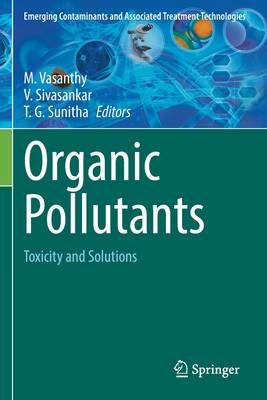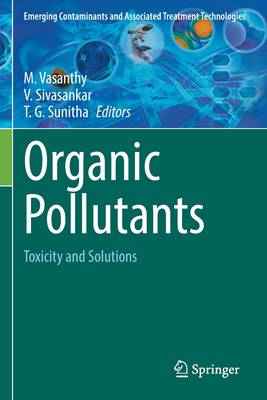
- Afhalen na 1 uur in een winkel met voorraad
- Gratis thuislevering in België vanaf € 30
- Ruim aanbod met 7 miljoen producten
- Afhalen na 1 uur in een winkel met voorraad
- Gratis thuislevering in België vanaf € 30
- Ruim aanbod met 7 miljoen producten
Zoeken
Organic Pollutants
Toxicity and Solutions
€ 147,95
+ 295 punten
Omschrijving
Chapter 1.- Organic pollutants: Past, present and the future. Chapter 2.- Persistent Organic Pollutants (POPs): Sources and adverse effects to human health and Environment. Chapter 3.- Assessment of POPs in water. Chapter 4.- Monitoring of POPs: A Global Perspective. Chapter 5.- Organochlorines and organophosphates: Bioaccumulation and Toxicity. Chapter 6.- Pharmaceutical pollutants in water: Toxicity and health hazards. Chapter 7.- Textile organic chemicals in water: Pervasive toxicity to humans and aquatic animals. Chapter 8.- Organic toxins in cosmetic products: Quantification and risk evaluation. Chapter 9.- Disinfectant products: toxicity and health hazards. Chapter 10.- Obesogens and obesity: Challenges and prospects. Chapter 11.- Pheromones: A Potential alternative to organic recalcitrant compounds. Chapter 12.- Microplastics as carriers of organic pollutants: An overview. Chapter 13.- Removal of POPs through degradation mechanisms by possible technologies. Chapter 14.- Microbes assisted adsorptive removal of melanoidin from distillery effluents. Chapter 15.- Remediation of dye effluents using algal species. Chapter 16.- Recovery of organic nutrients through the remediation of solid waste. Chapter 17.- Post.- consumer organic waste management and nutrients recovery through ecofriendly techniques. Chapter 18.- Instrumental applications in the analysis of various organic pollutants.
Specificaties
Betrokkenen
- Uitgeverij:
Inhoud
- Aantal bladzijden:
- 600
- Taal:
- Engels
- Reeks:
Eigenschappen
- Productcode (EAN):
- 9783030724436
- Verschijningsdatum:
- 25/10/2022
- Uitvoering:
- Paperback
- Formaat:
- Trade paperback (VS)
- Afmetingen:
- 156 mm x 234 mm
- Gewicht:
- 857 g

Alleen bij Standaard Boekhandel
+ 295 punten op je klantenkaart van Standaard Boekhandel
Beoordelingen
We publiceren alleen reviews die voldoen aan de voorwaarden voor reviews. Bekijk onze voorwaarden voor reviews.










